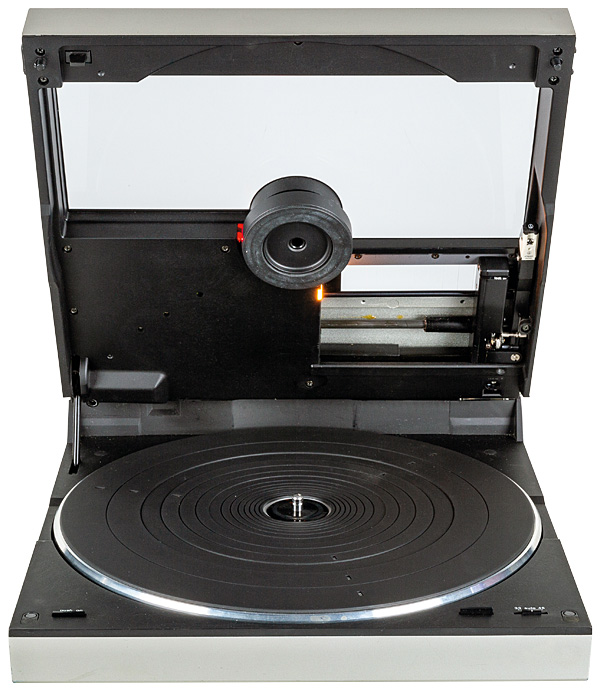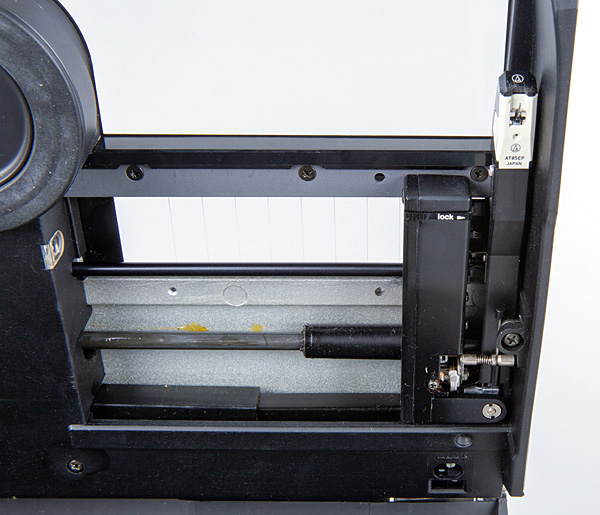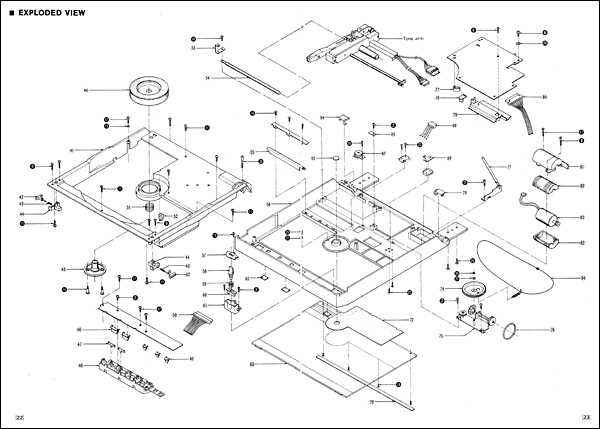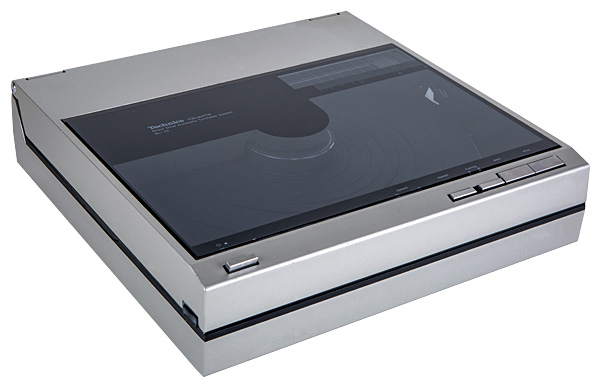Technics SL-10 turntable Page 2
![]() Tim Listens
Tim Listens
Finding replacement T4P cartridges has posed a problem in the past, but now Audio-Technica has saved the day with its AT-85EP – a quality component and good value for money. So equipped, the SL-10 rewarded with a bright, lively sound. Bass was tight and dry with excellent control, which is no doubt an effect of the stubby arm and its minimal resonances. True, the sound could at times be a shade hard in the upper midrange, but in exchange for this was a fine sense of precision and focus.
The motor is superb: it runs silently, meaning there's no audible rumble, while its stability results in notes and tempos that stay steady without a hint of waver – subject to the virtuosity of the musicians, of course. One appreciates the effect most clearly with beat-driven music, especially that which is generated electronically. I particularly enjoyed The Pointer Sisters album Break Out [Planet FL89450] on the SL-10, especially the track 'Automatic' (appropriately enough…). The metronomic percussion that runs throughout the song was always bang on time, and seemed to pull the rest of the music tight around it. The stability here showed what an exceptional turntable the SL-10 really is.

The linear-tracking arm also seems to work well, with little in the way of degradation in the quality of tracks nearest the record's centre. The set-up of the cartridge in a conventional arm is always a compromise – a balance between where the best and worst distortion figures can be achieved. This is not the case with linear tracking – when it is implemented correctly – and the SL-10 is a good example of that. Many LPs have their most interesting pieces at the end of one side, the very position where conventional turntables begin to struggle. Never For Ever by Kate Bush [EMI EMA 794] is one such album – I'm sure that I'm not alone in finding 'Breathing' at the end of side two to be the recording's high-point.
Streets Ahead
While I was unable to say from listening that the SL-10 produces less distortion when playing this part of the disc than does a conventional turntable – I tried it against the Sony quartz-lock direct-drive PS-X4 [HFN Sep '17] – it was plain that the soundstage had a more solid, structural form. The effect was like that one hears from CD, and was not so pronounced when listening to 'The Wedding List' (another favourite track on Never For Ever) at the beginning of the side.

Quiet passages and long breaks between tracks do reveal the well known 'bump thump' noise of the arm's servo motor, however. The level is low, but the effect is clearly audible. In defence of the deck, most of the time these noises are drowned out by the music being played and so for many listeners should not present a problem.
As a practical means of listening to records the Technics SL-10 is nearly perfect, trouncing all but the very best conventional designs when it comes to accuracy and consistency. That it was inexpensive, attractive, simple to operate and supremely reliable put it streets ahead of all others as an idealised synthesis of the turntable as a consumer product.

Not all took it to their hearts though, because it is a closed system that the owner cannot change, other than by replacing the cartridge. To some, hi-fi is a hobby which goes beyond just listening to recordings. Selecting, adapting, modifying and upgrading equipment is also a huge part of it, and with no component is this aspect more true than the turntable.
If this describes you, then there is every chance you will hate the SL-10. On the other hand, if you are prepared to trust the designer's choices and appreciate quality engineering and considered styling then you will love it – I know I do.
Buying Secondhand
The SL-10 is a complicated machine and its small size only adds to the daunting nature of dealing with a faulty unit. However, the quality of all the components used is high so catastrophic failures are rare. The present fad of replacing all the electrolytic capacitors is unnecessary here, although the correct Matsushita 'M' types are still in production for when replacements are genuinely needed.
Of those faults which do occur by far the most common is caused by the drive belt for the arm getting slack. This is located inside the lid and takes some getting to, but it should be the first port of call when dealing with a faulty Technics SL-10 (or one if its cousins).

The 'lid open' sensor, also located in the top half, is the other common source of problems. Should this fail it can be dismantled and cleaned, although this takes a keen eye and a steady hand. The SL-10 is a sturdy machine so there is no need to remove the platter or the cartridge when transporting it; indeed one can cause damage by doing so. There is a small catch to retain the arm, which should be secured whenever the deck is moved.
Hi-Fi News Verdict
Although not as overtly flashy and technical looking as some, the Technics SL-10 deserves a place in the top tier of turntables. It reaches a level of performance with ease that others struggle to attain, yet is no more demanding to own and to operate than a CD player. One of the last great turntable designs before the digital era, the SL-10 demands attention and respect. It looks like a toy, but it really isn't.























































